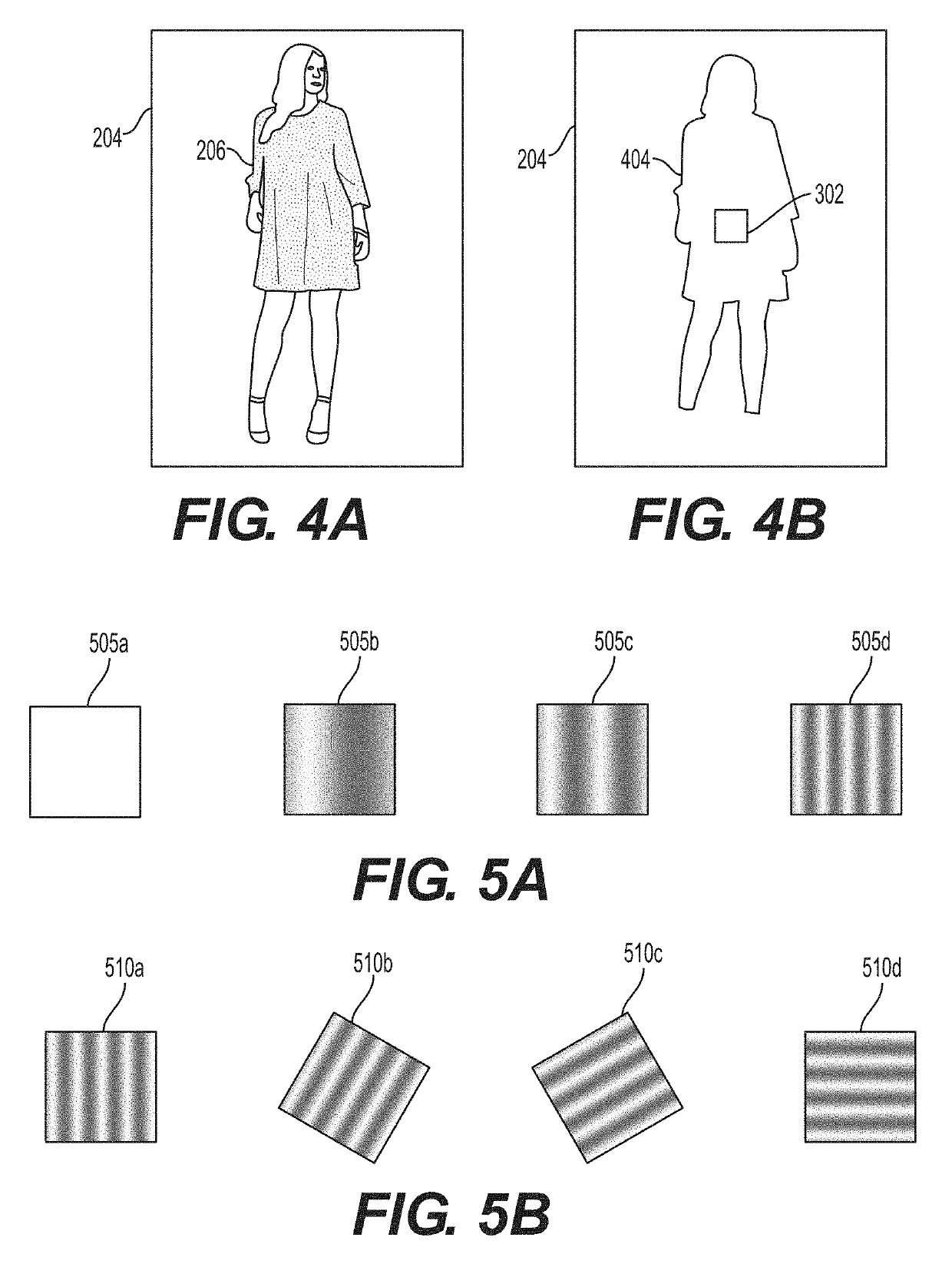Systems and methods for color and pattern analysis of images of wearable items
a wearable item and color pattern technology, applied in the field of image processing, can solve the problems of large amount of resources, lack of explainability, and the neural network approach requires a significant amount of data and computational resources to train a neural network model, so as to avoid the training of a neural network and avoid the effect of excessive costs and computational resources
- Summary
- Abstract
- Description
- Claims
- Application Information
AI Technical Summary
Benefits of technology
Problems solved by technology
Method used
Image
Examples
Embodiment Construction
[0023]As described above, conventional methods of wearable item image analysis typically employ neural network approaches (i.e., “deep learning”). As noted above, conventional methods for image processing using “deep learning” neural network approaches are suboptimal, especially in certain garment e-commerce, and other wearable item use cases. For example, such conventional methods are costly in terms of obtaining and utilizing input data and computational resources to train the algorithms for neural networks. Additionally, the neural network approach provides results in which the method and / or reasoning for the results are not transparent. The following embodiments describe systems and methods for analyzing images including a wearable item.
[0024]While the exemplary system architecture as described in the present disclosure relates to electronic transaction platform for subscribing to, purchasing, or renting wearable items (e.g., clothing-as-a-service (CaaS) or Try-Then-Buy (TTB) se...
PUM
 Login to View More
Login to View More Abstract
Description
Claims
Application Information
 Login to View More
Login to View More - Generate Ideas
- Intellectual Property
- Life Sciences
- Materials
- Tech Scout
- Unparalleled Data Quality
- Higher Quality Content
- 60% Fewer Hallucinations
Browse by: Latest US Patents, China's latest patents, Technical Efficacy Thesaurus, Application Domain, Technology Topic, Popular Technical Reports.
© 2025 PatSnap. All rights reserved.Legal|Privacy policy|Modern Slavery Act Transparency Statement|Sitemap|About US| Contact US: help@patsnap.com



